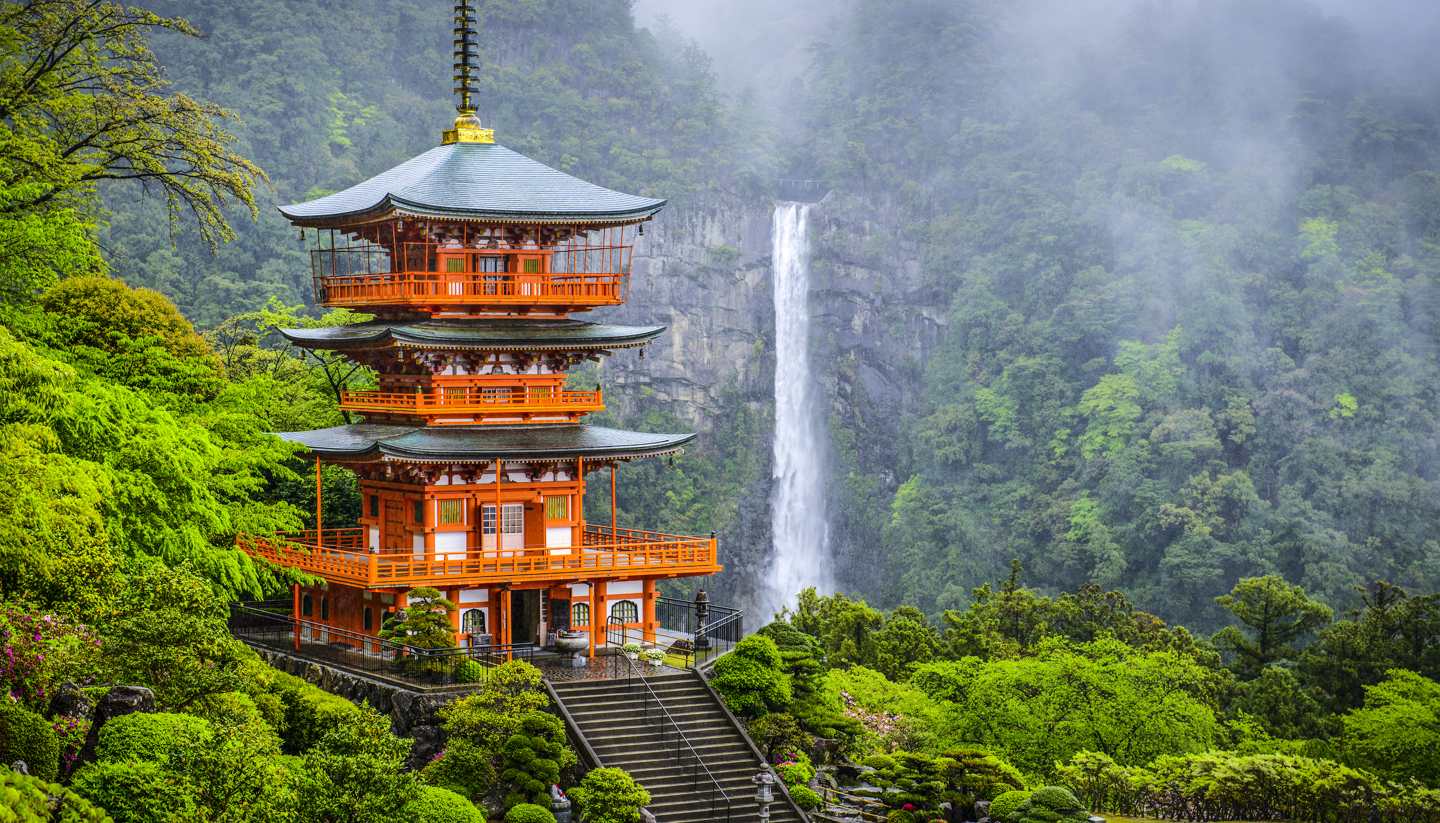Japan Food and Drink
Japanese cuisine involves fresh, delicate flavours based on seasonal ingredients. Rice, miso (fermented soybean) soup, tofu (soybean curd), pickled vegetables and fresh seafood are staples of the Japanese diet. Consumption of beef, chicken and pork is also widespread.
The wide range of ingredients, the intensive preparation methods, and the meticulous presentation found in Japanese cuisine are highly impressive. Sushi is world-renowned, but it's not the only style of cooking. There are different styles of noodles (Ramen, Soba and Udon), tempuras, meat skewers, octopus balls, all the way to some of the finest beef in the world.
The pinnacle of Japanese cuisine is, of course, kaiseki, a multi-course, fine-dining-style banquet.
While sake (rice wine) is still regularly served, beer is by far the most popular alcoholic beverage. Whisky is also gaining popularity thanks to a number of Scotch-style distilleries.
Specialities
Teriyaki: Grilled meat or fish marinated in soy sauce, mirin wine and sugar.
Tempura: Seafood and vegetables deep-fried in a light batter.
Sushi: Slices of raw fish and vegetables placed on cooked vinegared rice.
Sashimi: Thinly sliced fresh fish often served uncooked with soy sauce, pickled ginger and wasabi.
Ramen: Noodles in a meat, fish, soy or miso-based broth with toppings such as sliced pork, spring onions and a boiled egg.
Soba: Buckwheat noodles often served cold with a dipping sauce or in a hot broth.
Kushikatsu: Crumbed fish, meat and vegetables deep-fried on skewers.
Yakitori: Skewers of bite-sized grilled chicken.
Okonomiyaki: A grilled savoury pancake made with shredded cabbage, seafood or pork and noodles.
Champuru: Okinawan style stir-fry featuring goya bitter melon, egg, meat or fish and tofu.
Shojin-ryori: Known for its delicate flavourings, this traditional Buddhist cuisine is made using grains, vegetables, tofu and rice.
Matcha: A bitter green tea used in tea ceremonies.
Sake: Dry or sweet rice wine served hot or cold.
Asahi and Sapporo: Crisp, dry lagers served in most Japanese bars and restaurants.
Whisky: Japanese distilleries such as Suntory and Nikka are winning plaudits around the world with their fine, Scotch-style malts.
Things to know
Most traditional Japanese cuisine is eaten with chopsticks. Restaurants have table service and, in some places, it is customary to remove footwear. There are no licensing hours, and drinking is subject to long-standing rituals of politeness – the host will pour a drink for the visitor and will insist on the visitor's glass being full; it is bad manners for a visitor to pour one for him or herself.
Tipping
Tips are never expected and can even be considered impolite. In some upmarket places, a 10 to 15% service charge will be added to the bill. In some bars, there may be a table or "charm" charge too, which can be quite steep; it's best to enquire in advance if you're in any doubt.
Drinking age
20.




